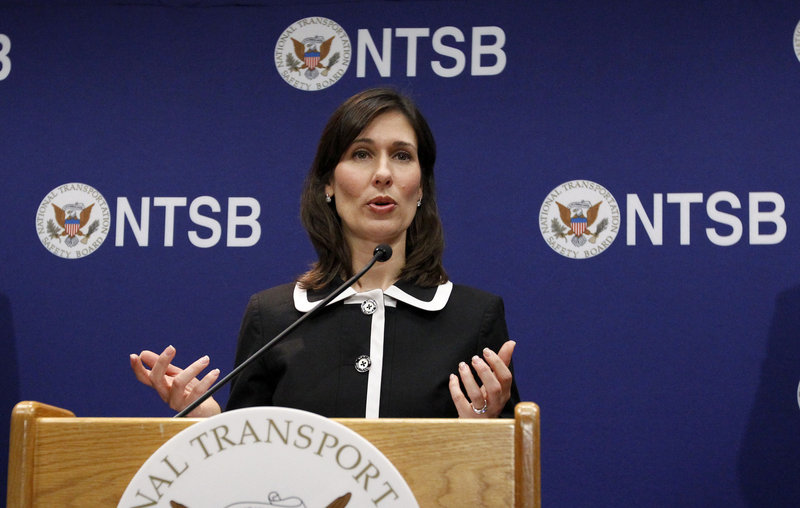WASHINGTON – The government should reassess its safety approval of the Boeing 787 lithium ion batteries, the nation’s top accident investigator said Thursday, casting doubt on whether the airliner’s troubles can be quickly remedied.
The National Transportation Safety Board is investigating last month’s battery fire in a Japan Airlines 787 “Dreamliner” while it was parked in Boston. The results so far contradict some of the assumptions that were made about the battery’s safety at the time the system won government approval, said the board’s chairman, Deborah Hersman.
The investigation shows the fire started with multiple short-circuits in one of the battery’s eight cells, she said. That created an uncontrolled chemical reaction known as “thermal runaway,” which is characterized by progressively hotter temperatures. That spread the short-circuiting to the rest of the cells and caused the fire, she said.
The findings are at odds with what Boeing told the Federal Aviation Administration when that agency was working to certify the company’s newest and most technologically advanced plane for flight, Hersman said. Boeing said its testing showed that any short-circuiting was contained within a single cell, preventing thermal runaway and fire, she told reporters at a news conference.
Boeing’s testing also showed the batteries were likely to cause smoke in only 1 in 10 million flight hours, she said.
But the Boston fire was followed nine days later by a smoking battery in an All Nippon Airways plane that made an emergency landing in Japan. The 787 fleet has recorded less than 100,000 flight hours, Hersman noted.
The plane that caught fire in Boston was delivered to Japan Airlines less than three weeks before the fire and had recorded only 169 flight hours over 22 flights.
“There have now been two battery events resulting in smoke less than two weeks apart on two different aircraft,” she said. “This investigation has demonstrated that a short-circuit in a single cell can propagate to adjacent cells and result in smoke and fire. The assumptions used to certify the battery must be reconsidered.”
Investigators are still trying to determine why the first battery cell short-circuited, but the board’s findings appear to raise doubts about the thoroughness of FAA’s safety certification of the 787’s batteries and whether Boeing can remedy the problems with the addition of a few quick safeguards.
The FAA typically delegates testing of new aircraft designs to the manufacturer, while overseeing that the tests meet the agency’s requirements. The agency also relies to some degree on the expertise of the manufacturer’s engineers, especially in the case of a cutting-edge plane like the 787.
Send questions/comments to the editors.



Success. Please wait for the page to reload. If the page does not reload within 5 seconds, please refresh the page.
Enter your email and password to access comments.
Hi, to comment on stories you must . This profile is in addition to your subscription and website login.
Already have a commenting profile? .
Invalid username/password.
Please check your email to confirm and complete your registration.
Only subscribers are eligible to post comments. Please subscribe or login first for digital access. Here’s why.
Use the form below to reset your password. When you've submitted your account email, we will send an email with a reset code.